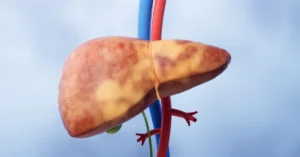
Fatty Liver Disease
Fatty liver disease, once a rare condition, has now become

Hepatitis B and C are viral infections that cause inflammation of the liver, leading to a range of health issues. Both conditions are caused by different viruses but share similar routes of transmission and potential complications. Here, we break down each type to understand their distinct characteristics.
Hepatitis B
Hepatitis C
Understanding the definitions and key differences between hepatitis B and C is crucial in managing and preventing these liver diseases. By being aware of their transmission methods and potential health impacts, individuals can take proactive steps to protect their liver health.
Hepatitis B and C are significant viral infections that can silently damage the liver over time, often without showing any immediate symptoms.
Hepatitis B and C Symptoms: The symptoms of hepatitis B and C can range from mild to severe and may not appear until the liver has been significantly damaged. Common symptoms include:
Understanding the symptoms and causes of hepatitis B and C is crucial for early detection and effective management.
Hepatitis B and C Causes: Both hepatitis B and C are primarily transmitted through contact with infected blood and bodily fluids. The main causes include:
By recognizing the symptoms and understanding the causes, individuals can take proactive steps to prevent and seek timely treatment for hepatitis B and C. Early detection is key to managing these infections and preventing severe liver damage, including the need for a liver transplant.
When it comes to managing hepatitis B and C, early detection and prompt treatment are crucial. Both conditions can lead to severe liver damage, so understanding the treatment options is essential. Here, we will discuss the available treatments for hepatitis B and C, including medication and lifestyle changes, and the possibility of a liver transplant.
Hepatitis B Treatment: For hepatitis B, the primary goal is to reduce the viral load and prevent liver damage. Antiviral medications play a key role in managing the infection and preventing complications.
Hepatitis C Treatment: Hepatitis C treatment has advanced significantly with the development of direct-acting antiviral (DAA) medications, which can cure most cases of hepatitis C.
By staying informed about the treatment options for hepatitis B and C, patients can take proactive steps to manage their condition and maintain liver health.
Preventing hepatitis B and C is crucial to reduce the risk of liver damage, chronic liver disease, and liver cancer. While hepatitis B and C share some common preventive measures, there are specific strategies tailored to each virus. Understanding these prevention methods can help protect yourself and others from these serious liver diseases.
Preventing Hepatitis B
Preventing Hepatitis C
By implementing these preventive measures, we can significantly reduce the incidence of hepatitis B and C, protecting liver health and overall well-being.
For patients suffering from severe liver damage due to hepatitis B and C, a liver transplant may become necessary to save their lives and improve their quality of life. Understanding the eligibility criteria for a liver transplant is crucial for those affected by these conditions. Here’s what you need to know:
To be eligible for a liver transplant for hepatitis B and C, patients typically need to meet specific medical and lifestyle criteria. This ensures that the transplant will be successful and that the patient can handle the rigorous demands of post-transplant care. Here are the key criteria:
Meeting these criteria is essential to be considered for a liver transplant, offering a chance for a new, healthier life despite the challenges of hepatitis B and C.
Hepatitis B and C are serious liver diseases that require early detection and proper management to prevent severe complications. Understanding the symptoms and causes, seeking appropriate treatment, and taking preventive measures can significantly reduce the risk of chronic liver disease and liver cancer. Stay informed, get vaccinated, and practice safe health habits to protect yourself and others from hepatitis B and C.
Yes, a liver transplant is possible for patients with severe liver damage due to hepatitis B.
The survival rate for hepatitis B liver transplant patients varies but can be as high as 85% at one year post-transplant with proper treatment and care.
Hepatitis B or C can potentially recur in the new liver, but antiviral treatments can help manage and prevent recurrence.
Yes, hepatitis B and C are serious liver diseases that can lead to chronic liver disease, liver cancer, and liver failure if left untreated.
Yes, both hepatitis B and C can be asymptomatic for years, which is why regular screening and early detection are crucial.

Fatty liver disease, once a rare condition, has now become

Cirrhosis of the liver is a serious medical condition that




Undergoing a liver transplant is a monumental step in treating

A liver transplant is a crucial and intricate surgical procedure

Embarking on a liver transplant journey in India is a

Understanding the types of liver transplant is crucial for patients with severe liver conditions like cirrhosis or liver failure.

Liver transplant surgery is a vital procedure for individuals with severe liver disease, offering a chance for survival and improved quality of life. This complex operation involves replacing a diseased liver with a healthy one from a donor.

Undergoing a liver transplant is a monumental step in treating severe liver disease, but the journey to recovery continues well beyond the operating room. Post-surgical care is crucial for ensuring the success of the liver transplant and improving the patient’s overall health.

Liver transplant surgery can be life-saving, but it’s not suitable for everyone. Key contraindications include active substance abuse, uncontrolled infections, severe cardiopulmonary disease, advanced age, malignancies outside the liver, and lack of social support.